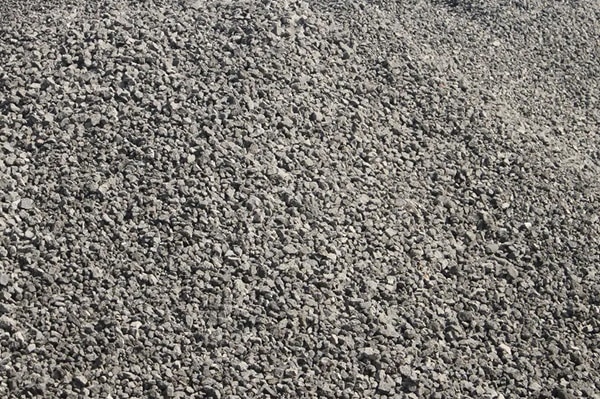Silica fume, also known as microsilica, is produced as a by-product during the manufacturing process of silicon metal and ferrosilicon alloys, which are widely used in applications such as silicons, computer chip fabrication, aluminum and steel production, and more.
While these materials are incredibly important in industrial applications, their by-product silica fume plays a crucial role in the concrete industry. At Henan Superior Abrasives Import & Export Co., Ltd., we supply silica fume or microsilica of various grades and concentrations. Continue reading to learn more about different micro silica fume grades and how they are used.
Silica Fume Overview
Before we dive into the differences among silica fume grades and their properties, let us have a quick refreshment of what silica fume is.
Silica fume, also known as microsilica, or volatilized silica, presents a pozzolanic material. The silica fume material looks like grey powder, quite similar to fly ashes or Portland cement. Silica fume consists mostly of amorphous or non-crystalline Silicon Dioxide (SiO2), with particles around 100 times smaller than the average cement particle.
Whenever natural properties of concrete need to be modified, silica fume can be added to concrete during batching, making concrete very durable and considerably stronger.
Silica Fume Properties
To summarize, the main properties of microsilica include:
- Size: The dimensions of silica fume particles are considerably smaller than that of cement particles. Each particle of silica fume is less than 1 micrometer in diameter, with the average diameter being approximately 0.15 micrometer. As such, each microsilica particle is approximately 0.01 the size of a cement particle.
- Bulk density: Silica fume’s bulk density can range between 130 and 800 kg/m3, depending on the degree of the densification of the material.
- Specific gravity: Specific gravity describes the ratio of the substance’s density to the density of a standard reference. The specific gravity of silica fume can range between 2.2 and 2.3.
- Reaction time: When added to concrete, silica fume does not start reacting immediately. Instead, it remains inert for a short period of time. When the Portland cement and silica fume are combined, the process of mixing, or hydration, begins. During this hydration, two primary chemical compounds are produced: calcium hydroxide and calcium silicate. While calcium hydroxide doesn’t affect the properties of cement, calcium silicate hydrate leads to increased strength and durability.
Silica Fume Classification and Grades
Silica fume is classified into different grades and types based on its density, purity, and particle size. The price, performance, price, and applications of various grades are also different.
1. According to SiO2 Concentration
While many international standards require microsilica to have Silicon Dioxide or SiO2 content of at least 85%, the standard can range from country to country. In general, silica fume can be subdivided into five categories based on its SiO2 content:
- SiO2 above 85%, with an average value above 88%. This type controls the loss of ignition, therefore, is used for low-grade refractories and concrete.
- SiO2 above 90%, with an average value of 92%. This grade can be used in general refractory materials and concrete to control related impurities by customer’s requirements.
- SiO2 above 92%, with an average value of 94%. This silica fume grade finds applications in medium- and high-grade refractories and involves specific requirements for fluidity.
- SiO2 above 94%, with an average value of 95%. This silica fume grade is produced from Zirconia and is white in color.
- SiO2 above 99%, with an average value of 99.5%.
At Henan Superior Abrasives Import & Export Co., Ltd, we supply silica fume or microsilica with SiO2 content ranging from 85% to 99%.
2. By Material Fume Density
In addition to CO2 concentration, silica fume can be divided into four groups based on its density:
- Original state. The density of silica fume in the original state ranges between 100-170 kg/m3. In this original state, silica fume bonds easily but is difficult to transport.
- Mild encryption. Mildly-encrypted silica fume has the density of 200-250 kg/m3. At this state, the material consists of no particles, with significantly easier transportation. However, mildly-encrypted microsilica is still unstable under the influence of temperature.
- Semi-encryption. Semi-encrypted silica fume has a density of 250-350 kg/m3. At this density, numerous loose particles start to appear, which are not easy to bond. However, the ease of transportation is significantly improved.
- High-density. Finally, high-density silica fume has a density of 550-750 kg/m3 and consists of mainly hard particles of different particle sizes and compactness. High-density microsilica is easy to transport.
Between these four groups, silica fume is often further classified into densified and undensified silica fume.
Densified Silica Fume
Densified Silica Fume, or DSF, refers to dry densified silica fume with bulk density of 550-750 kg/m3. This type of microsilica is ready-to-use and produces incredibly durable, high-strength concrete with low rebound shotcrete and very low permeability.
Recommended Uses
DSF is recommended for use wherever shotcrete or high-performance concrete is required. Higher strengths reduce erection, production, and transportation costs, as well as column sizes, thus ensuring that new structural designs are possible. In addition, microsilica concrete produced with DSF has lower chloride permeability, making it highly suitable for bridge decks, parking structures, and marine structures.
DSF allows for the production of dense, less permeable concrete, which is ideal to solve the problem of industrial floor deterioration in aggressive environments. When used in shotcrete, DSG increases overhead buildup and reduces rebound.
Properties of Densified Silica Fume
At Henan Superior Abrasives Import & Export Co., Ltd, we offer several grades of densified silica fume, classified as Grade 85D, Grade 90D, Grade 92D, and Grade 96D. DSF is available with the following properties:
- Appearance: dark-grey powder
- Specific gravity: 2.2-2.3
- Bulk density: 550-750 kg/m3
- SiO2 content: 85%-96%
Undensified Silica Fume
While the chemical composition of densified and undensified silica fume is exactly the same, there are some important differences in their physical properties.
When silica fume is produced, it is smelted by a high-temperature electric arc furnace and collected in the form of undensified silica fume. This undensified silica fume is referred to as the “original ash,” as it is the initial state of microsilica. This type of silica fume is incredibly light, has a density of 250-350 kg/m3, is very active, and requires a large storage space.
Recommended Uses
Undensified silica fume is commonly used in pre-bagged products, such as repair mortars and grouts. However, it is not widely used for concrete production due to its high price caused by the inconvenience involved with storage and transportation, along with lower demand.
Properties of Undensified Silica Fume
At Henan Superior Abrasives Import & Export Co., Ltd, we offer several grades of undensified silica fume, classified as Grade 85U, Grade 90U, Grade 92U, Grade 96U, and Grade 99U. Undensified silica fume is available with the following properties:
- Appearance: dark-grey powder
- Specific gravity: 2.2-2.3
- Bulk density: 250-350 kg/m3
- SiO2 content: 85%-99%
By Particle Size or Specific Surface Area
Furthermore, silica fume can be classified by the size and surface area of the particle:
- Median diameter of 0.3um. Most silicon powders in the world belong to this category, with almost all particle sizes falling under 1um, and the specific surface area of 15-25 m2/g.
- Median diameter under 0.1um. This type of silica fume is typically found in high-purity silicon powders and is relatively rare. The specific surface area is usually more than or equal to 30m2/g.
- Median diameter of 0.5-2.0um. This type of microsilica has a specific surface area of 5-15m2/g and is also rare.
- Median diameter above 2.0um. Larger particle sizes are incredibly rare and lead to poor performance.
It is important to choose the appropriate type of microsilica powder according to the actual needs and required applications, which will lead to better results and more economical outcomes.
By Silica Fume Application
Today, microsilica is used in numerous industries, including refractory, plastics, clay, electronic materials, adhesives, silicone rubber, precision casting, and more. Silica fume can be further subdivided based on its application:
- Refractories. Silica fume is commonly used in castable, sintered, and fused refractories. For example, it can be used in high-performance, high-grade, and low-cement refractory castables and prefabricated parts, air permeable bricks, large-scale iron trenches and ladles, and more.
- Mortar and concrete. Silica fume can also be used for harbour wharfs, high-rise buildings, railway bridges, reservoir dams, concrete pavement, and more.
- Protective coatings. Nano-silica sol serves as an active material for fire protection, environmental protection, and anticorrosive coating.
- Wall and decorative materials. Silica fume can also be used for thermal insulation mortar, polymer mortar, and as an interface agent for wall insulation.
- Putty. Microsilica can be used in putty powder for exterior and interior wall insulation.
- Filling and reinforcement. It is also used as filling and reinforcing materials in resin, rubber, paint, unsaturated polyester, and more.
- Additives. Finally, silica fume is commonly used as an additive in other active areas.
Choose Among Numerous Silica Fume Grades Available at HSA
Silica fume finds applications in a wide range of industries, and it is incredibly important to choose the right microsilica grade with the desired properties. Luckily, at Henan Superior Abrasives Import & Export Co., Ltd., we supply microsilica of various grades and concentrations. Shop high-quality silica today.





